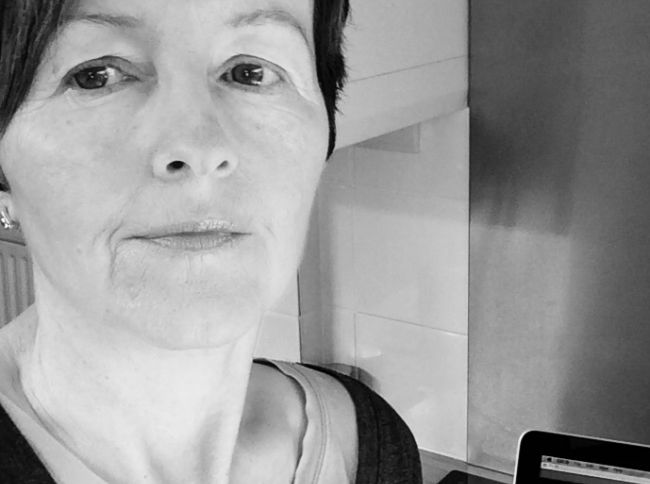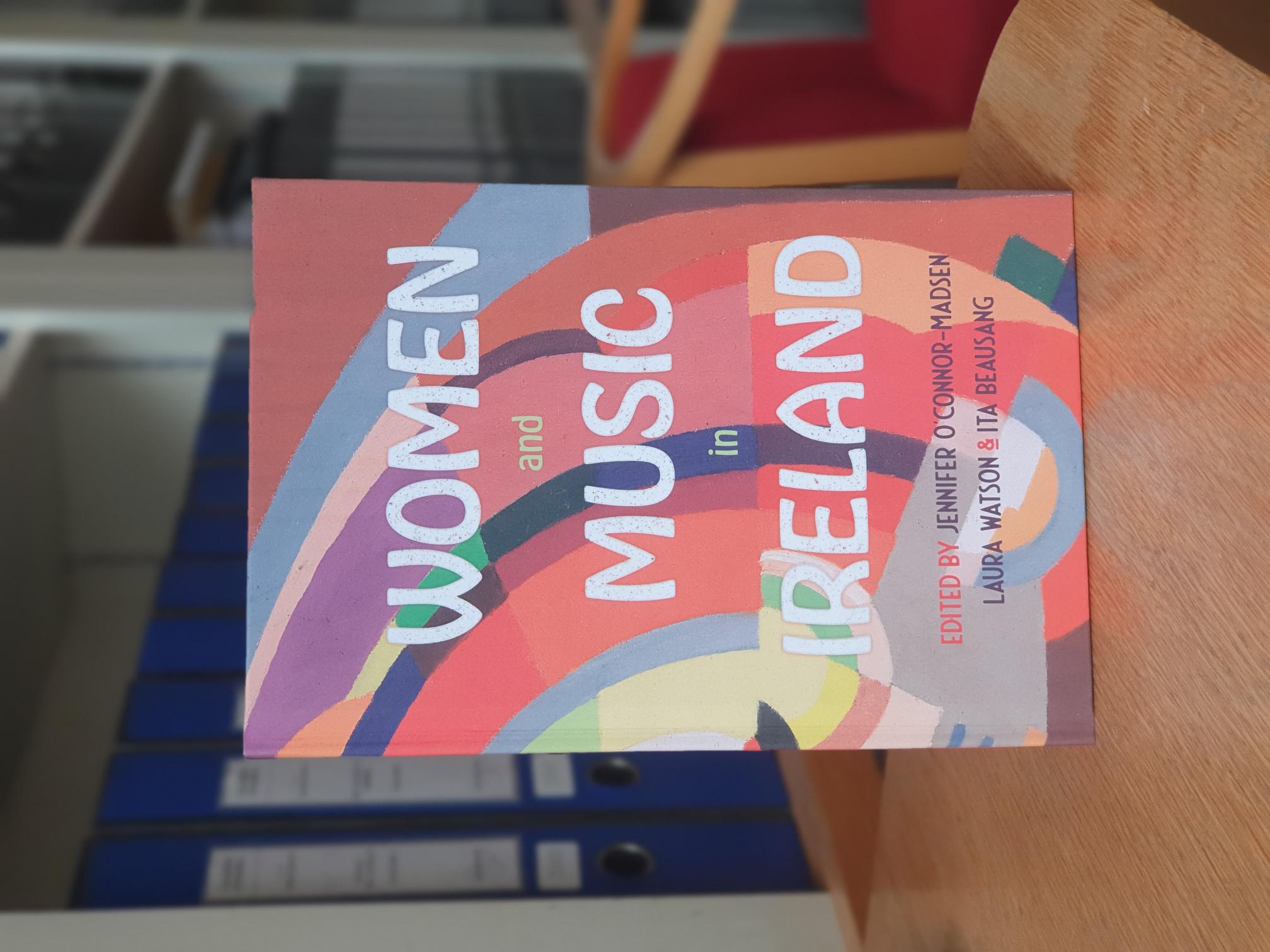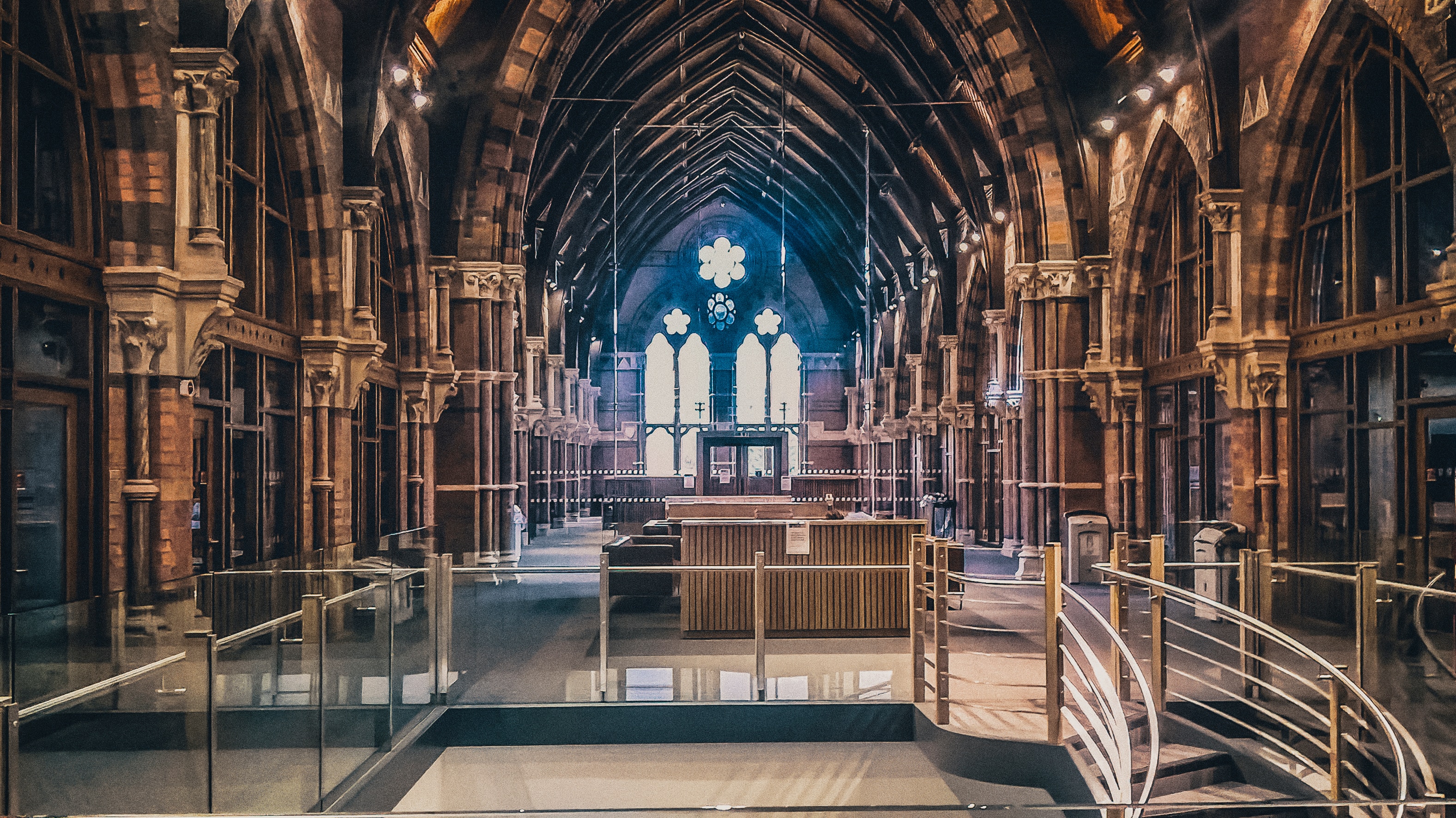MA student Jacqueline Corr writes about Bernadette Comac
A guest post from Jacqueline Corr, who is currently undertaking an MA in Performance and Musicology at Maynooth University.
Comac In Context
Bernadette Comac is a digital composer and artist who has made a significant contribution to the field of electronic music in Ireland. Originally from Northern Ireland, Comac comes from a musical background involving Irish traditional music. While studying music at Queen’s University Belfast, she began to specialise in electronic music composition. Since then, her compositional career has been characterised by innovative choices leading to musical breakthroughs, which place her work at the forefront of this field of composition. As such, Comac is an extremely important figure to consider when examining electronic music in Ireland.
It was noted in the recently published Women in Music in Ireland (2023), that previous discussions regarding electronic music in Ireland did not account for the works that were being produced by Comac early on in her career. In reference to one of Comac’s earliest works, A Homage to Mary (1989), Dr Barbara Dignam presents her findings when reviewing the current literature available on the world of electronic art music in Ireland.
Dignam found that in Irish Music in the Twentieth Century, Paschall de Paor provided a comprehensive outline of electroacoustic music in Ireland based on what information was available about the field in 2003. In Women in Music in Ireland, Dignam observed that this leading source addressing the field of electronic music in Ireland ommitted Comac's works, whereas the music of her male counterparts was discussed at length. Dignam notes:
[Paschall de Paor] fails to make any reference to women. A cursory exploration of the archive of the Contemporary Music Centre (CMC) uncovers an early work by Bernadette Comac (b .1960): A Homage to Mary for voice, mixed choir and live electronics (1989). Comac’s omission from the timeline is puzzling, considering that she was arguably as established in the discipline as her male peer Fergus Johnston, whose Study No. 1 for electronics (1989) is included.
This demonstrates that a prominent source on the field of electronic music in Ireland, is willing to take into account the works of the male composers active at the same time as Comac, but neglects to mention the electronic work that she was producing.
Furthermore, records held in the Contemporary Music Centre's archive indicate that A Homage to Mary was written in 1989, making this work the earliest instance of a woman composing electronic works in Ireland. This places Bernadette Comac at the beginning of a long line of women who have pushed against the limitations of society to be part of electronic music creation. With electronic music compostion happening at the intersection between technology and music, women had to fight to be recognised in both of these fields simultaneously. Not only did Irish women involved in electronic music composition break down the barriers in place to be part of the conversation as composers, they also made breakthroughs that have advanced the field in many respects.
Interviewing Bernadette Comac
During my time researching Bernadette Comac and her work within the field of composition I had the privilege of speaking with Comac about her experience and compositional process. We discussed topics such as elements of her work, some of the compositional techniques she has employed during her career, and her perspective on the current barriers and opportunities available for women composing on the island of Ireland. Comac offered her perspective on current issues for women in the field and how this is compounded by the lack of categorisation that is often applied to electronic music composition. Aspects of electronic composition, such as its technological medium and non-conventional scores, make it difficult to document and accurately arrange the pieces emerging from this vein of composition. This categorisation barrier, in addition to more overt instances of inequality such as the gender imbalance within electronic music composition, are two examples of the boundaries that were pushed by Comac in the creation of her electronic musical works.
Comac's The Virtual Performer (2012) is just one example of the way in which women have advanced the modes of thinking, creativity and the medium through which electronic music can be delivered. This work incorporates the use of visual technologies that project a 3D figure to a moveable figure-like structure that act as a portable performance. Inspired by the use of virtual assistants, Comac took the idea and created an immensely new, progressive way of experiencing vocal works. In her programme notes to the piece, Comac expresses her desire to extend the possibilities available when considering virtual performance:
I was immediately struck by the possibilities of using something similar to present a vocal work. I am excited about the potential for virtual performance and I imagine downloading holographic performances would be a matter of course.
This treatment of visuals demonstrates Comac’s extensive creative ability and innovative thought processes that led her to produce to an incredible work that was included in two festivals, the Sonorities Festival and the Béal Festival, as a sound installation. You can listen to The Virtual Performer on SoundCloud.
In our interview, we also discussed Comac’s work on the mobile, computerised singer and she expressed the great curiosity she has toward the possibilities of technology. Comac described her collaboration with the singer involved in the project The Virtual Performer as an amazing opportunity to work with such an extensive vocal range and ability. Certain compositional techniques Comac utilises revolve around an affinity that Comac holds towards immersive experiences involving brand new technologies. She has used contemporary mechanisms to deliver her musical pieces, including structures such as Telephone boxes, mobile computerised singers and ultrasonic speakers. When speaking about her interests in cultivating source sounds, Comac expressed interest in both ASMR and Foley Art which speak to the level of thought Comac puts toward the intended effect of the sounds used throughout her musical work.
We Walk with Ghosts (1996) is another fascinating piece by Bernadette Comac which was premiered in the Harty Room at Queen’s University Belfast the year it was composed. This is another instance of Comac being at the forefront of representation for women in Ireland involved in electronic music composition, with this piece being one of very few pieces currently on record released by women in Ireland during the 1990s. Written for tape, this piece utilises vocal recordings of breath and speech against the backdrop of detailed electronically produced and manipulated gestures. The Irish language is also featured within this piece through the medium of the female voice reading a poetic passage. During our conversation, Comac explained to me that this use of the language came in the form of her utilising a poem written in Irish to function as a script for the voice.
One of the main attributes of this piece is the treatment of the vocal recordings, as the voice in this piece acts as an auditory realisation of the act of walking among ghosts. Another characteristic of this work is that the composer utilises the stereo field to its fullest, making it an extremely spacious piece for the synthetic sounds she has created to breathe. Through the use of panning, Comac has evoked a sense of movement which gives the impression that the different elements of the soundscape, such as the voices, are shifting around. The addition of panning in this instance creates an eerie landscape that speaks to the supernatural and portrays a sense of what it may feel like to be in the presence of spirits.
Spanning over 8 minutes, We Walk with Ghosts takes the listener on a journey to discover what it may sound like to be in the presence of spirits of Irish descendants. The piece opens by taking advantage of the stereo field, allowing a breath-filled tension to surround the listeners' ears. The use of traditional Irish instruments can also be heard about half-way through the piece. Their dissonant entry vaguely alludes to the use of uilleann pipes and fiddle segments, which evokes a sense of the rich history of traditional Irish music. Around the six minute mark, discordant cries are introduced, which allows listeners to get an aural glimpse of the use of the Irish language. Overall, this piece illustrates Comac's impressive skillset, which has allowed her to depict the uncanny apparitions of Irish history.
This early instance of electronic work in Comac’s output resonates with an idea she expressed during our conversation where she stated: 'I have always felt the need to use technology to explore sounds.' This idea speaks to the overall approach Comac takes toward composition as she pushes the boundaries of what technology can do for our ability to express ourselves musically.
Progressive Thinking
At Queen's University Belfast, an institution renowned for its commitment to electronic music, Comac was one of the first to have access to the computer program C Sound. Comac has continued to be at the forefront of progressive thinking and experimental electronic music in Ireland.
Throughout the conversation I had with Comac, she expressed the importance of staying in tune with what is currently going on in the world; this attitude to be aware of what is current is apparent within Comac’s experimentation with technology to communicate through music. This ability to be up-to-date with modern means of production is further reflected in Comac’s current interest in the world of AI, and what artificial intelligence can offer with regard to composition.
This research on Bernadette Comac serves to illustrate that the compositions of women within the field of electronics have been just as present as those of their male counterparts throughout the lifespan of electronic music composition in Ireland. Bernadette Comac is a shining example of the innovative, important work that has formed Ireland’s contribution to the world of new electronic music.



